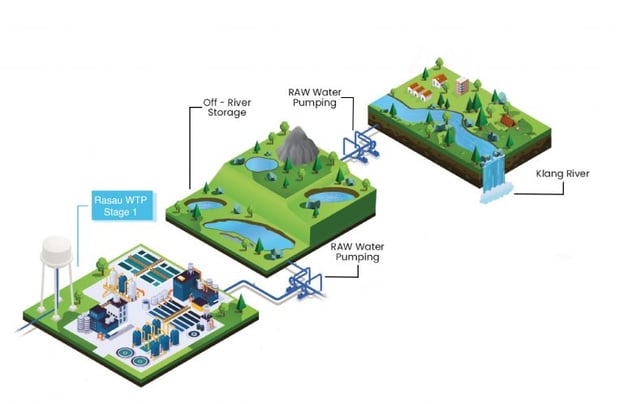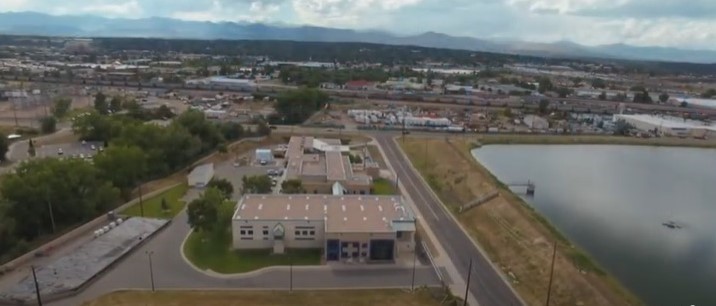Managing Raw Water Storage with Geomembranes in Water Treatment Plants
Post 1: What is Raw Water Storage?
On September 19, 2022, the lead story in WaterOnline.com was headlined “Water Infrastructure Failures are Eroding Customer Trust”. Even the American Society of Civil Engineers (ASCE) reports that reliability in both water and wastewater systems has been decreasing for several years. The 2021 biannual ASCE Infrastructure report card gives water systems a C- , and years of poor ratings have now become apparent with failures and lack of public trust. Flint, Michigan and Jackson, Mississippi for instance are known for their drinking water problems. Additionally, forever chemicals (PFAS) potentially in our water supply leaves much doubt. The U.S. Water Industry has had a challenging time lately.
What can be done?
Resilience (in drinking water systems) is an evolving term in the industry. ASCE broadly defines it as utilizing “new approaches, materials and technologies to ensure our infrastructure can withstand or quickly recover from natural or man-made hazards.” Risk based design and risk-based maintenance are considered strategies for both cost savings and reliability. There are several strategies that are fundamental to reliability in water supply and treatment operations:
- Reliable raw water supply
- Backup systems and parts for crucial processes and mechanical components.
- Procedures for worst case scenario operations including weather, mechanical and operational events.
This blog focuses on reliable raw water supply and the use of geomembranes in those storage systems. While 71% of the earth is covered with water, only 3% of that is fresh water. Further, only a fraction of that is potentially useable for drinking water. All water sources are subject to some amount of variability in quality and available volume. The CDC estimates that 58% of the U.S. population receives treated drinking water which originated as surface water with the remainder from groundwater. Surface water can change rapidly due to climatic conditions and influences from adjacent and upgradient activities. To provide a reliable supply of water, many water treatment facilities utilize an impoundment to hold raw water intermediate between the water source and the treatment plant. The storage of water prior to treatment (raw water) is a proven way to ensure adequate supply for the treatment processes. The following depiction illustrates a typical flow/storage pattern for river (surface) water storage between the source and the water treatment plant.
 Raw water pumping and storage layout. Source: AirSelangor.com
Raw water pumping and storage layout. Source: AirSelangor.com
The Suez Water Handbook identifies the following 3 reasons a water treatment facility should include raw water storage as a component of their processes.
- Lowered river or other surface water source accompanied by variations in water quality. Raw water storage capacity is typically sized based on the longest drought forecast. With lower flow, water quality is often affected including lower dissolved oxygen and other parameters which can result in more difficulty achieving finished water standards.
- Accidental pollution. Upstream activity or accidents can severely disrupt treatment activity. The option to seamlessly switch to a reliable offline raw water supply is vital.
- Rapid and/or frequent variations in water quality, particularly suspended solids and ammonia. Surface water can originate from various sources including surface runoff that can be highly variable in quantity and quality. Some changes however can be anticipated such as those related to weather, seasons, or known/anticipated activity. Raw water storage is a valuable tool to manage variations in raw water quality and quantity.
What about the quality of the stored water?
Water in exposed storage can undergo changes, some favorable, and some not. Algal growth is a concern which can be minimized with higher oxygen content. In fact, some water systems aerate raw water in surface impoundments. Intake position and depth is another controllable factor to maximize quality entering the treatment plant.
Geomembranes are valuable tools in raw water storage to:
- Avoid contact with subsoil to minimize suspended solids and pollutants from the subgrade.
- Provide for settling.
- Establish Proper control of water routing through the impoundment to prevent short circuiting.
Resiliency in raw water storage quality and quantity is maximized by geomembrane containment which will be explored further in Post No. 2 of this series.

Water Treatment Plant with Raw Water Storage Impoundment. Colorado, USA
Source: City of Englewood, CO



